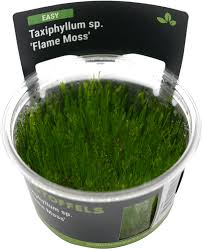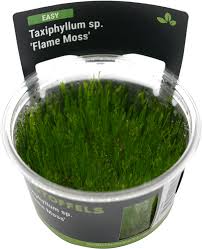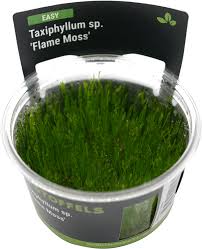Stoffels Taxiphyllum sp. ‘Flame Moss’ in-vitro
Stoffels Taxiphyllum sp. ‘Flame Moss’ in-vitro
check_circle Fast Shipping
check_circle Quality Products
check_circle Affordable Price
Reach out to us on ''available to order'' items via WhatsApp or email
Out of stock
Couldn't load pickup availability

Stoffels Taxiphyllum sp. ‘Flame Moss’ in-vitro
package_2
Product Description
Product Description
- Scientific Name: Taxiphyllum sp. ‘Flame Moss’
- Common Name: Flame Moss
- Origin: Southeast Asia
- Family: Hypnaceae
- Height: 3-15 cm
- Growth Rate: Slow to Moderate
- Placement in Tank: Foreground, Midground, Attached to Hardscape
- Light Requirement: Low to Medium
- CO2 Requirement: Not required but beneficial for faster growth
- Temperature: 18-28°C
- pH: 6.0-7.5
- Propagation: Division, cuttings
The Taxiphyllum sp. ‘Flame Moss’ is a unique and visually striking moss species in aquascaping, known for its upward spiraling, flame-like growth pattern. Its bright green fronds twist upwards, creating an unusual and eye-catching effect in the aquarium. Grown in-vitro, this moss is delivered free from pests, algae, and contaminants, ensuring a clean and healthy start for your aquascape.
Key Features:
- Flame-Like Growth: Flame Moss is named for its upward, twisting growth pattern that resembles the flickering of a flame, adding a dynamic, textured look to aquascapes.
- Low Maintenance: This moss is hardy and adaptable, growing well in a variety of water conditions, making it suitable for beginners and experienced aquascapers alike.
- In-Vitro Cultivation: Grown in sterile conditions, Flame Moss arrives free of snails, algae, and pathogens, providing a clean and safe start for your tank.
- Versatile Use: It can be attached to rocks, driftwood, or even mesh to create vertical accents, or used as a foreground plant for unique layering.
Care Requirements:
- Lighting: Flame Moss thrives in low to medium lighting conditions. Higher lighting can promote faster growth, but the moss will still maintain its signature upward spiral in low light.
- CO2: While Flame Moss can grow well without CO2 supplementation, adding CO2 will enhance growth and make the moss denser and more vibrant.
- Water Parameters: This moss adapts well to a range of water conditions, with an ideal pH range of 6.0-7.5 and temperatures between 18-28°C.
- Trimming: Regular trimming is recommended to control its upward growth and maintain its unique flame-like shape. Trimmed portions can be reattached to other hardscapes.
Planting Tips:
- Rinse the moss thoroughly to remove the nutrient gel before attaching it to rocks, driftwood, or other hardscape elements.
- Use thread or fishing line to secure the moss in place until it naturally attaches over time.
- Ensure good water circulation around the moss to prevent debris buildup and promote healthy growth.


